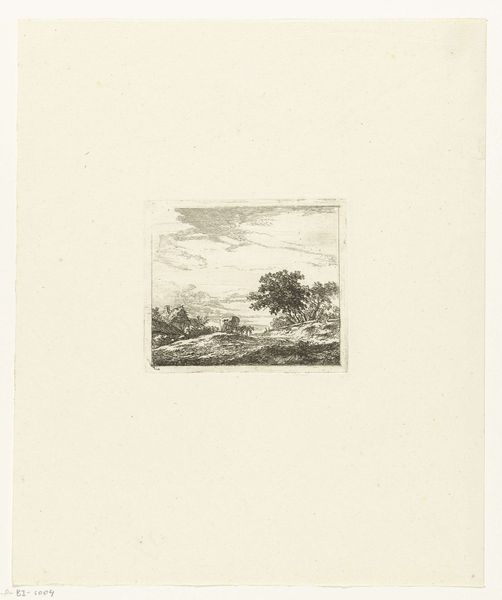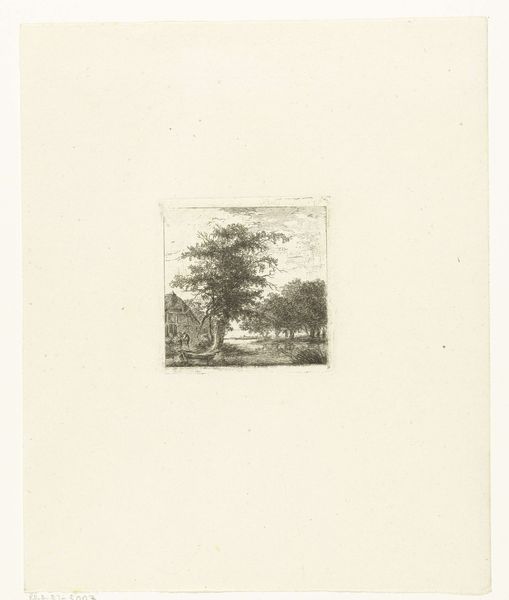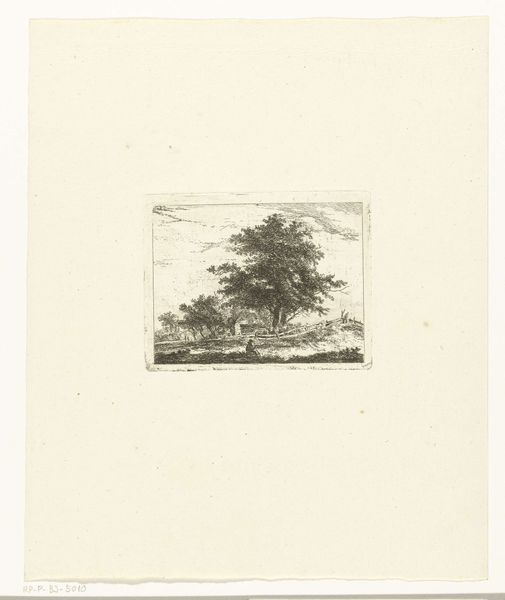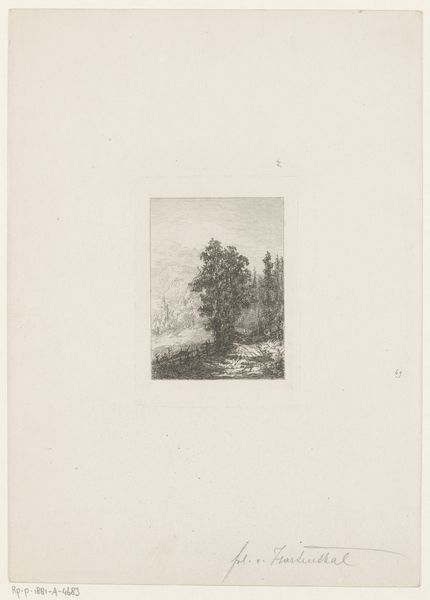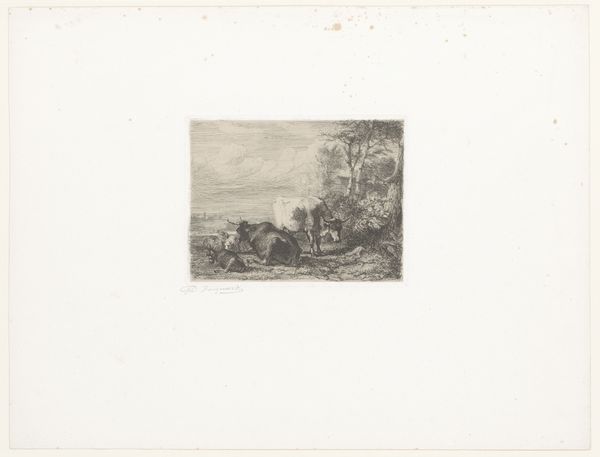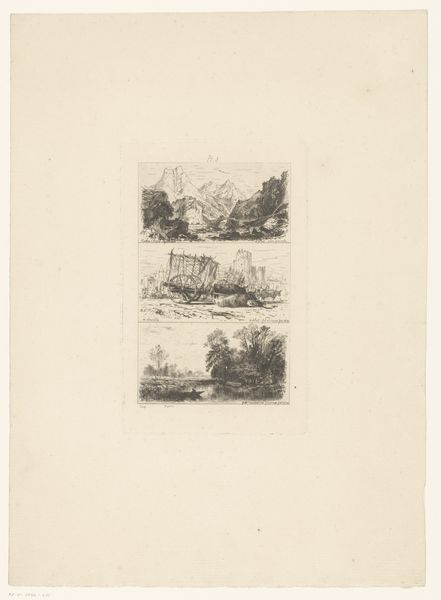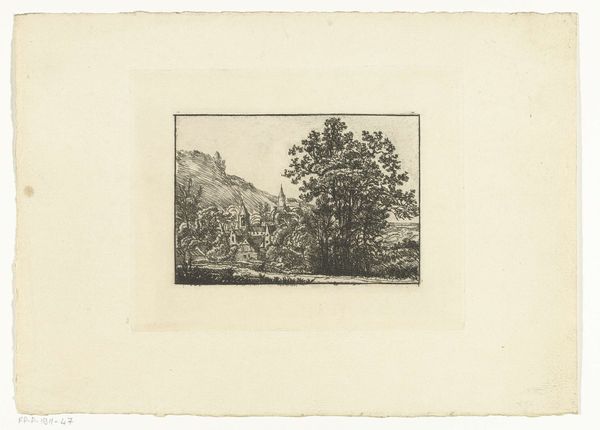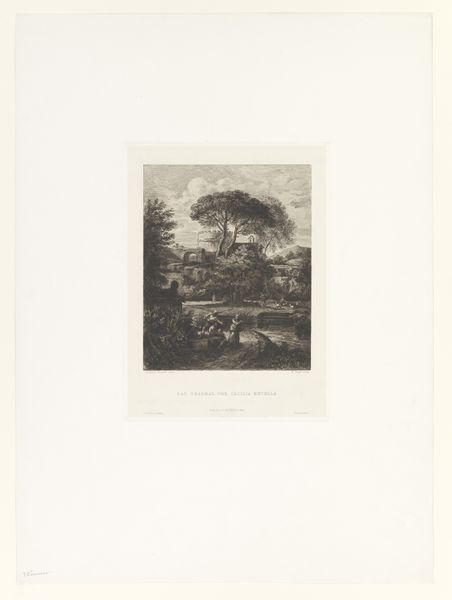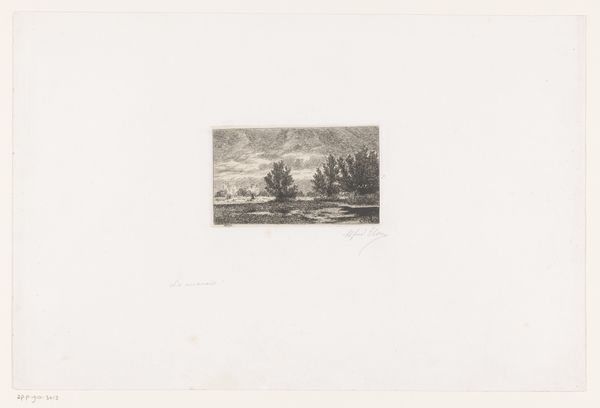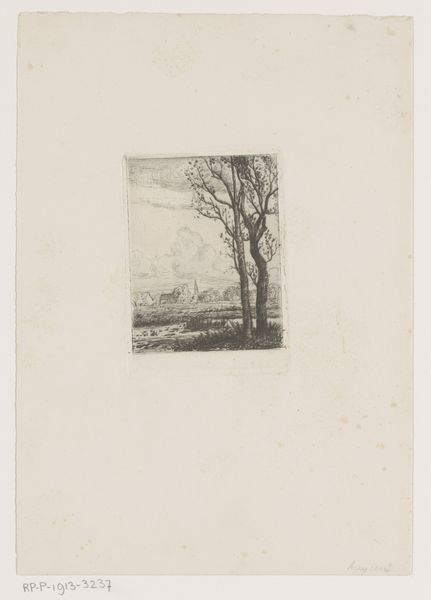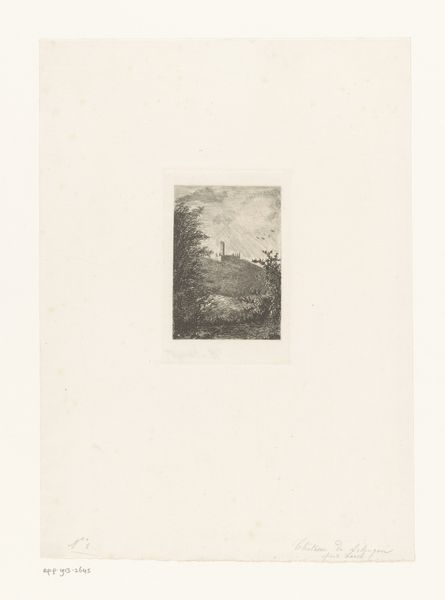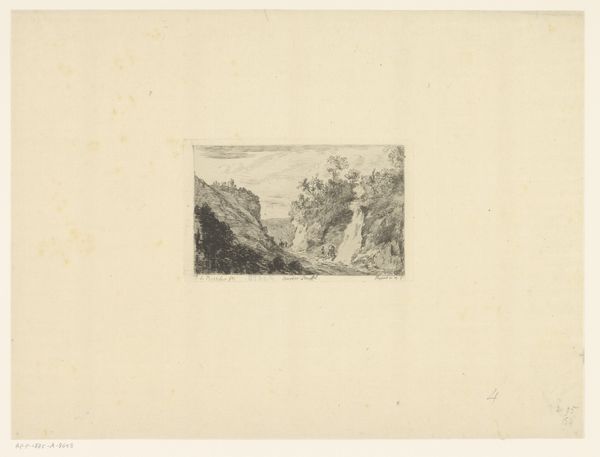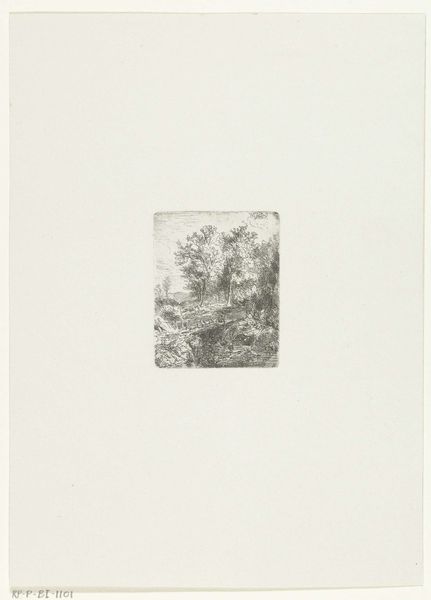
drawing, print, etching, paper
#
drawing
# print
#
etching
#
landscape
#
paper
#
romanticism
Dimensions: height 76 mm, width 98 mm
Copyright: Rijks Museum: Open Domain
Editor: This etching from before 1815, “Landschap met twee wandelaars bij een hutje” by Hermanus van Brussel, has such an intimate feel, doesn’t it? There's a quietness to the scene. How do you interpret this work, especially given the period it was created in? Curator: It’s easy to get lost in that quietness, isn't it? But I think it’s important to unpack that. Early 19th century landscapes like this one, especially etchings, often participate in a romantic idealization of rural life. Consider who has access to that 'quiet' versus who is silenced or displaced to create this idyll. Who are those walkers, for instance? Are they landowners? Or laborers barely visible in the scene? The landscape becomes a stage upon which power relations are enacted. Does the 'hutje' perhaps indicate poverty or inequality? Editor: That’s fascinating. I hadn’t considered the social commentary. It seems so removed from reality at first glance. Curator: And that’s exactly where the power lies, right? The image presents itself as innocent, yet it participates in a narrative that often marginalizes the working class and reinforces the landowners' gaze. Do you see elements of Romanticism in the piece? How do they contribute to the potential social narrative you've noticed? Editor: I guess I see Romanticism in the idealized nature, and the seemingly harmonious relationship between the figures and the land. That harmony, though, as you pointed out, might be hiding something darker. The almost picturesque composition feels like a constructed view. Curator: Exactly. And who benefits from this construction? Consider how landscape art has historically served to legitimize power structures, presenting an aestheticized version of reality that often obscures the complex social and political dynamics at play. The art itself becomes a form of subtle, visual propaganda, and it continues to perpetuate it through time. Editor: Wow, that gives me a completely different perspective on such seemingly simple artworks. Thank you. Curator: Of course. I appreciate you coming with me on this line of thought, it helps me consider further points of view, too.
Comments
No comments
Be the first to comment and join the conversation on the ultimate creative platform.
